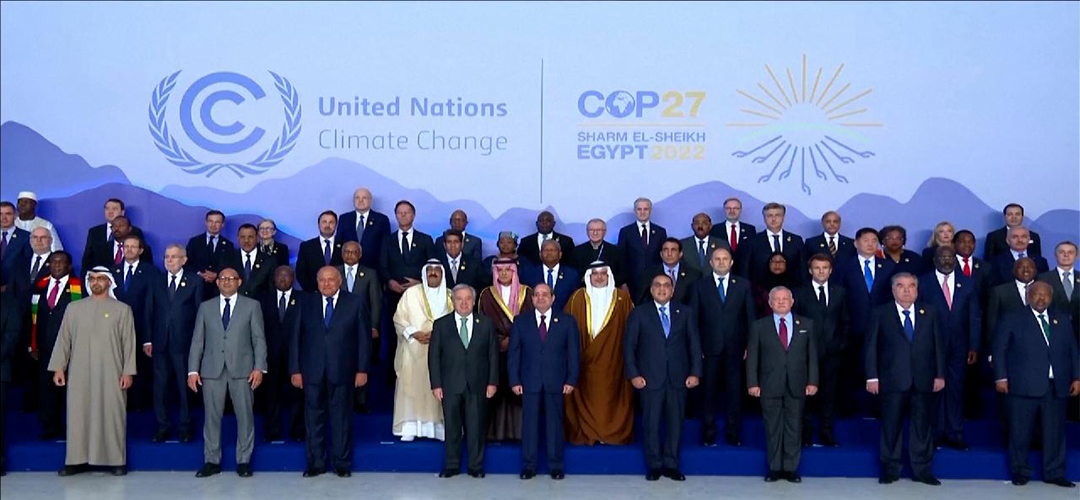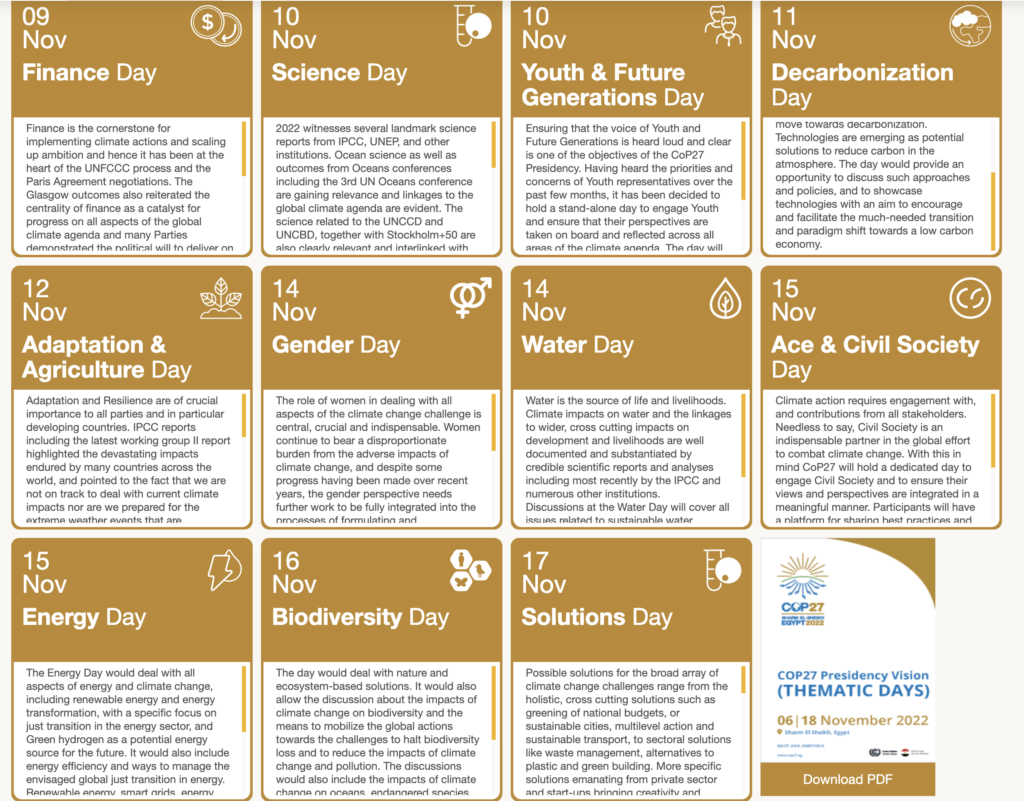COP27: PUTTING ON A SHOW?
November 26, 2022 | Expert Insights

Last week, the 27th Conference of Parties, often known as COP27, ended in Sharm El Sheikh, Egypt. The overarching message was an acceptance of the criticality of the climate situation, manifested through the establishment of a loss and damage fund, favouring the most vulnerable nations' interests. COP27 reaffirmed the 1.5 °Celsius targets even while experts predict that it may soon be breached.
Sadly, no new targets for reducing greenhouse emissions or restrictions on fossil fuels could be agreed upon. Perhaps the current energy crisis brought around by the war in Ukraine made it inappropriate to set unrealistic restrictions that will never be honoured when people fear a freezing winter with little or no heating.
It appears that, at last, the numerous promises made on climate justice are being realised by helping the poorest of the poor who contribute the least to climate change. But many confounding issues remain to be smoothened out: who, how and how much will the contribution be, and how will the recipients be shortlisted?
Background
The COP was established in 1995 when scientists concluded that if global temperatures rose by more than 1.7°C or 1.8°C, half of the world's population would experience life-threatening conditions. Naturally, with global temperatures rising each year, nations became alarmed. Last year, since the world peaked at 1.5 °C, it was expected that this year's meeting would usher in significant changes.
Since the conference's inception, wealthier nations have committed to supporting initiatives and sharing technologies with developing countries to help combat global warming. In truth, industrialised economies have yet to achieve their climate commitments while pressuring emerging markets to switch to green energy at an unrealistic rate. On the other side, developing countries on their own make little effort to implement measures that do not need foreign technological assistance, like better crop and livestock management, cut and burn cultivation, forest clearing and stubble burning. Rich or poor, the spirit of saving the climate must come from within the society if planet Earth must be conserved.
However, the rising sea levels are a real danger beyond any single country's control; this demands a truly global collaboration. Small island nations are particularly vulnerable to sea level rise and have been pleading for action for over a decade. Developed nations have ignored these demands in fear of being held financially accountable for the effects of their historically significant emissions of greenhouse gases.

Analysis
A record number of 45,000 individuals attended COP27, prompting some to wonder whether this approach is suitable for dealing with a global issue. The purpose of the gathering, which was to put pressure on world leaders to act more firmly and hold them accountable, was merely reduced to a great spectacle. Why? Because governments have forgotten to indigenise climate pacts to achieve meaningfully. It is time to pay much more attention to what goes around at home than globally.
The new loss and damage fund is meant to help rebuild poorer, more vulnerable nations that have been severely affected. The new fund will be distinct from current climate programmes supported by the U.N. because it will raise money from a broader range of sources, notably development banks and creative funding sources like tariffs on fossil fuels or airlines.
The focus was on long years of droughts and unprecedented levels of hunger. Parallel to the summit, Brazil, Indonesia, and the Democratic Republic of the Congo (DRC) forged an alliance at the concurrent G20 meeting in Indonesia, which activists dubbed the "OPEC for rainforests." The 1978 Amazon Cooperation Treaty Organization, an agreement between Brazil, Bolivia, Guyana, Peru, Suriname, and Venezuela to protect the Amazon rainforest, was pushed for revival by Colombia and Venezuela.
However, according to scientists, more than a million species are in danger of extinction, with the planet going through its sixth global mass extinction cycle. This is exacerbated by rapid habitat loss, with forests being converted to cities and farms or degraded by pollution.
The summit urged parties to explore appropriate, nature-based solutions or ecosystem-based alternatives in response to climate change. These include methods that support the Earth's built-in capacity to store carbon, such as preserving forests or reclaiming wetlands. Additionally, a more robust mandate was given to agriculture and food security, which were feared to be in danger of being removed from the agenda of the climate talks.
According to Global Witness, as cited by the Economist, the fossil fuel industry was present at COP27 in strength, with over 500 representatives, including the CEOs of BP, Total and Shell! What role do they have in such conclaves? As per the Economist, a Shell executive had once boasted of his company’s influence over the 2015 Paris Agreement. In this meeting, the item being offered by the Oil Giants was gas, trying to take over the slack left in the market by Russia’s exclusion.
Assessment
- On the face of it, it appears a lot of ground was covered in Egypt. Integrating food, rivers, nature-based solutions, tipping points, and the right to a healthy environment in an overarching COP is a first. The loss and damage fund is timely as even greater catastrophes are on the horizon because Cop27 failed to enforce greater emission reduction.
- In the first 20 years of this century, more than half of the 58 countries in the Vulnerable 20, a group of developing countries that includes Kenya, the Philippines, and Colombia, experienced economic losses attributable to climate change of over $500 billion.
- Future COPs must act with more urgency and commitment. More governments must address the emissions caused by consumption patterns and energy issues. They should also build agendas that support the shift to a resource-efficient economy.








Comments